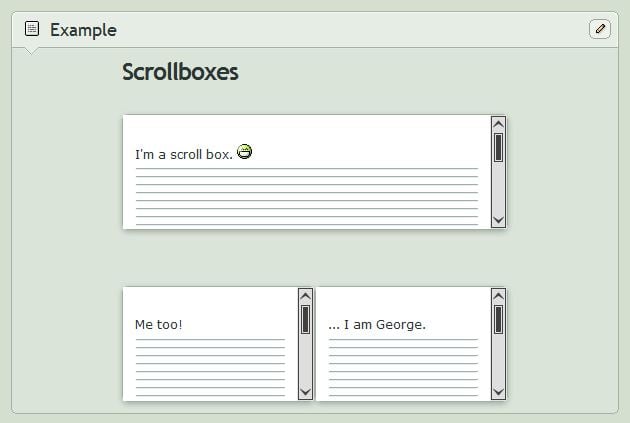What is a Real Estate Business?
A real estate business is any business that involves the buying, selling, management, operation, or investment of land and buildings. Most people associate real estate with residential and commercial buildings, but it can also include natural resources such as crops, minerals, or water. Here are some examples of real estate businesses:
- Appraiser
- Broker
- Buy and Hold Investor
- Cleaning Service Provider
- Construction Contractor
- Developer
- Fix and Flip Investor
- Hard Money Lender
- Home Inspector
- Home Repair Service Provider
- Home Stager
- Investing Club
- Online Training Course Lecturer
- Private Equity Manager
- Property Manager
- Real Estate Agent
- Real Estate Blogger
- Real Estate Podcaster
- Syndication
- Vacation Rental Service Provider
- Vacation Rental Host
- Wholesaler

How Do Real Estate Businesses Make a Profit?
There are two ways real estate businesses can make profit: appreciation and income.
Real Estate Profits Through Appreciation
Appreciation is an increase in an asset’s value over time. In the case of real estate, these assets could be residential properties, commercial properties, and undeveloped land. Here are some reasons the value could increase:
- Location
- Home improvements
- New developments
- Commercial property improvements

Real Estate Profits Through Income
Real estate businesses can gain income two ways: selling their assets after an increase in value and regular payment of rent and similar charges.
Rent payments from tenants are the primary way residential and commercial real estate generates income. After your costs are taken out, you claim what’s left as income.
Undeveloped land can also generate income depending on your rights to the land. Companies may pay regular payments for any new structures built on the land or royalties for any discoveries made on the land. These include but are not limited to
- New access roads
- Pipelines, cell towers
- Pipelines
- Pump jacks
- Rentals for agricultural purposes

12 Steps to Start a Real Estate Business
Now it’s time to walk you through the steps it takes to start a real estate business.
1. Develop Your Niche
You may have a lot of business ideas, but competition is fierce in the real estate game. Narrowing down your niche will help you compete with fewer other businesses and stand out from the crowd. Here are a few questions to ask yourself as you consider the niche for your business:
- Do you want to sell to a particular segment of the population?
- Do you want to concentrate on a specific area of your city?
- Do you want to specialize in a specific type of property?
Here are some real estate business niches to consider:
- Residential real estate
- Resort and vacation homes
- Income properties (homes purchased by a real estate investor to generate income through rental or leasing)
- Condos
- Commercially zoned real estate properties
- Property management
- Rental Property
You also should decide if you want to be a listing agent or exclusively represent real estate buyers.

2. Do Market Research
For real estate, or any small business, it’s important to understand the target market you’re about to enter before you dive into your business plan.
The first step is primary market research, which involves talking to potential customers via surveys, focus groups, one-on-one interviews, conversations on social media, and questionnaires.
Questions to ask include:
- What factors do your potential clients consider when purchasing real estate, like a residence, business real estate, or land?
- What do they think is working, and what needs improvement in their current location?
- What do they like and dislike about the location they are currently in?
- What is their current mortgage/rent? Do they feel it’s reasonable and has good value?
- Who are your direct competitors?
- Who are the top real estate sales agents working in your target niche?
- What makes them stand out from the rest of the competition?
The next step is secondary market research: information from existing sources. Currently available data can help you identify competitors and define your market segments. Social media in particular is a great place for demographic attributes.
As you launch your business, you’ll need to periodically consult this data, so make sure you spend a decent amount of time collecting it.
![]()
3. Create a real estate business plan
A business plan is an outline of the key elements of your business. It can be useful as a road map for new businesses and existing businesses alike. A business plan can also help you:
- Securing funding from lenders
- Bringing in new business partners
- Hiring third party service providers
Basically, a good business plan should convince people that working with or investing in your company is a smart choice.
Not every business plan has to be the same, but there are a few components that most of them have in common. The major sections of a real estate business plan are:
Executive Summary
This is the introduction of your business plan and the business itself. It should include:
- Business name
- Location
- Products and services
- Mission statement
- The purpose of the plan (to secure investors, set strategies, etc

Company Overview
This section of your business plan is where you go into more detail about your company, including:
- The legal structure of your business (LLC, sole proprietorship, corporation, etc.)
- A brief history of the business
- The nature of your business and the need it meets
- An overview of your business model, customers, and suppliers
- A summary of company growth
- Your short- and long-term goals
Real Estate Market Analysis
This is where you demonstrate your understanding of your industry and where your business fits into the landscape.
- Targeted customer segments, including size and demographics of each group
- Industry description and outlook
- Historical, current and projected marketing data

Competitive Analysis
It’s important to demonstrate to your potential stakeholders that you know who your competitors are and how you plan to compete with them. This section should answer:
- Who are your direct and indirect competitors?
- What are their strengths and weaknesses?
- What are your company’s competitive advantages?
Sales and Marketing Plan
The sales strategy complements the marketing plan by outlining your sales tactics in detail, including:
- An explanation of how you’ll promote your business to customers and enter the market
- Details about costs, pricing, promotions, distribution, and logistics

Operations Plan
- The operations cycle from supply acquisition through production to delivery
- Sources of labor and number of employees
- Operating hours and facilities data
Management Plan
This is where you highlight the people in your company and explain who does what. It should include:
- Chart of departments and key employees
- Profiles of your management team
- List of any advisors, such as board members, accountants, and attorneys

Operations Plan
The operations plan includes
- Your business location
- Facilities
- Equipment
- What kind of employees you’ll need
- Suppliers
- Manufacturing processes
- Any other operating details
Financial Plan
This is where you break down your financial goals and expectations that you’ve set based on market research. This is especially important if you’re asking for funding because potential investors will want to know where their money is going before they invest in it. Be sure to include:
- Financial statements from the past three to five years
- income statements
- balance sheets
- cash flow statements
- Financial projections
- forecasted income statements
- balance sheets
- cash flow statements
- capital expenditure budgets
- A brief analysis of your financial data

4. Calculate start-up costs
First, figure out exactly what you need to pay for. Major startup expenses for real estate businesses include:
Office Space
Before you start looking for an office for your business, ask yourself questions like:
- How much space do I need?
- Can I run my business out of my home?
- Would I rather buy vs. lease commercial property?
- Where would I like to open my business?
- How much is the security deposit or down payment?

Utilities
Don’t forget about utilities! These might include:
- WiFi
- Electric
- Gas
- Water
- Sewer
- Phone
- Cable
Equipment
No matter what kind of business you’re running, you’ll need equipment, including but not limited to:
- Copier
- Printers
- Computers
- Vehicles
- Software
- Office Furniture
- Office Supplies
- Appliances
- Light fixtures
Insurance
There are several types of insurance a real estate business may require, depending on the nature of the investments and how the business is structured. These include:
- Business owner’s policy
- Professional liability
- Worker’s compensation
- Commercial auto insurance
- Home-based business insurance
- Cyber liability insurance
- Landlord insurance
- Rent default insurance
Licenses and Permits
Most businesses need some kind of license in order to operate. Contact your state and local government to find out which licenses and permits your business needs. For new real estate companies, these may include:
- Business license
- Real estate license or broker license
- Building permit

Payroll
If you’re hiring employees, you need to pay them. And it’s not just their salary. Payroll costs typically include:
- Net pay
- Bonuses
- Commissions
- Overtime pay
- Paid time off
Marketing
Beginners don’t need to break the bank on marketing costs, but promoting your business to new customers isn’t free. Marketing costs early on might include:
- Social media ads
- Pay-per-click ads
- Blog
- Email marketing
- Business cards
- Flyers and signage

Taxes and Accounting
Starting a business means you’re on the hook for Uncle Sam. Some entrepreneurs start out by using accounting software. That works for everyday accounting tasks, but when it comes to tax time, consulting an accountant is an expense that could save you money later on by helping you find write-offs.
Legal Fees
It’s a good idea for new business owners to consult with a lawyer about your business structure and the laws that apply to your area. Incorporating your business also has fees that depend on your business entity.

5. Choose Your Business Entity
There are six business entity types, each with different registration requirements, liability structures, and tax requirements. They are
- Sole Proprietorship
- General Partnership
- Limited Partnership
- C-Corporation
- S-Corporation
- Limited Liability Company (LLC)
Sole proprietorship
A sole proprietorship is the most basic business entity. One person is responsible for all expenses and debts for the business. It is most commonly used for freelancers and consultants, but it’s also doable for retail businesses helmed by one person.
General Partnership
In a general partnership, two or more people share personal liability for a business.
Limited Partnership
In a limited partnership, there are two kinds of partners: general partners, who operate the business and assume liability, and limited partners, who only act as investors.
C-Corporation
A C-Corporation is a legal entity that is separate from the owners of the company. Owners or shareholders, a board of directors, and officers all have a say in the business operations
S-Corporation
The main difference between a C-Corp and an S-Corp is that S-Corps don’t have corporate-level taxation.
Limited Liability Company (LLC)
An LLC allows the owners, partners, and shareholders to limit their personal liability and also includes the tax and flexibility benefits of partnerships.

6. Get an Employer Identification Number
If you’re hiring employees, you’ll need to apply for an Employer Identification Number (EIN) from the IRS. An EIN also helps you keep your business and personal taxes separate from one another. The IRS has a checklist to determine whether or not you need an EIN.
7. Get Your License
No matter what state you’re operating in, real estate professionals need a license. Here are the steps for getting a real estate license and a broker license.
Real estate license
In most states, a real estate license permits you to sell residential real estate. Selling commercial real estate typically requires additional certifications.
These are the basic steps to get a real estate license:
Take the real estate pre-licensing course for your state
A pre-licensing course helps you study the topics on the real estate licensing exam including
- Fair housing laws
- Property ownership types
- Fiduciary responsibilities
- Titles
- Deeds
- Contracts
- Federal real estate laws
- Laws and regulations in your state
Pass the real estate licensing exam
The real estate licensing exam can take 1.5 - 3.5 hours depending on your state. In most states the exam is multiple choice and a score of 70% - 75% is passing.
Submit your real estate license application
As soon as you pass your exam, submit your license application to your state’s real estate board. Some states charge application fees and others require all applicants to submit their fingerprints for a background check.
Find a real estate broker to work for
In order to start working as a real estate agent, your license needs to be associated with a licensed real estate brokerage. Before you choose one, do some careful research and weigh the pros and cons of your options.

Broker license
The basic steps for obtaining a real estate broker license are the same in most states:
Start with a real estate license
Having a real estate license is required to become a real estate broker.
Experience
To be eligible for a broker license, you must have 2-4 years of real estate industry experience. Some states also require candidates to complete a minimum number of real estate business transactions for broker license eligibility.
Education
Every state requires broker license candidates to complete 45-90 hours of pre-licensing education.
Broker’s Exam
Once you’ve completed your pre-licensing education, it’s time to take the broker licensing exam. The broker’s exam is lengthier and more comprehensive than the exam for a real estate agent.
Application and Fees
Licensing application fees cost between $150 and $200 depending on the state.

8. Create a pro forma
A real estate pro forma is a document that is used to forecast the income, expenses, cash flow, and net operating income from a rental property.
A basic pro forma for real estate includes:
- Projected gross income
- Vacancy loss when the property is unoccupied
- Other income (such as pet rent)
- Property management
- Maintenance
- Repairs
- Property tax
- Mortgage interest
- HOA dues
- Capital expenditures
9. Research Real Estate Investments
Once you’ve laid out the groundwork for your real estate business, it’s time to start investing! If you’re not sure where to start, try a marketplace like Roofstock, Crowdstreet, or Fundrise. These sites make investing in real estate easy and accessible for beginners.

10. Build a Real Estate Website
The first step 44% of all buyers take in their search for a new home is to go online. If you don’t have a website, you’re missing out on a lot of potential customers even if your other marketing efforts are solid. Once you have your website set up, drive traffic to it with:
Content marketing
Content marketing is a very popular digital marketing method. Content marketing is basically creating materials to advertise your business without looking like ads. High quality content is usually entertaining or educational in nature. Its purpose is to increase organic traffic and to build authority and trust with your potential customers.

Search engine optimization
Search Engine Optimization (SEO) is not only the hottest trend in marketing strategy, the internet practically revolves around it now. SEO refers to the practice of optimizing your website content to get it to the top of the page. When most people hear it, they think of keyword research and content marketing, but it’s so much more than that. It’s also making your website as easy to use as possible so people and search engine crawlers alike can properly rank it.

Social media and search ads
Advertising your website doesn’t require a big marketing budget. Here are a few low-cost advertising opportunities you can use to drive traffic to your website.
- Facebook Ads
- Instagrams Ads
- Pinterest Ads
- Google Ads
Partnering with influencers
Influencer marketing is a growing trend that doesn’t seem to be going away any time soon. Influencers in your niche can help you build brand awareness, website traffic, and sales alike.
Posting in online communities and forums
Participating in real estate-related online communities and forums is a great way to get your name out there and build a reputation as an expert. These could be:
- Facebook groups
- LinkedIn groups
- Subreddits
- Quora threads
- Discord servers
- Public Slack channels
- And more

11. Marketing Your Real Estate Business
A marketing strategy is essential for a successful real estate business. Start with determining your unique value proposition and company values. Then, create your logo and mission statement. These will help you create future marketing campaigns and create a cohesive brand.
Here are a few marketing materials that are important for new real estate businesses:
Direct Mail
Direct mail may sound retro when everything is online now, but it has an important place in the real estate industry. Postcards, handwritten letters, and flyers by mail are popular tools for real estate investors looking for clients. With direct mail, consistency is everything. You might not get a response after the first try, but the second or third typically has a higher response rate.
![]()
Email Marketing
Email marketing is an effective, low-cost digital marketing tactic. Building up a solid email list takes more time than getting people’s physical addresses, but if you use a list building strategy, the returns will be worth the effort. Here are a few things you can do to build an email marketing list:
Give people incentives to sign up
Most people won’t just give you their email address if you ask. Sweeten the deal with an incentive like:
- A free eBook
- A checklist summarizing steps from a blog post
- A PDF version of a blog post or case study
- A cheat sheet
- A coupon
- A webinar registration
- A template or worksheet
- A free course or email series
Create pop-ups for your website
A successful pop-up form should:
- Entice potential customers with an appealing headline
- Increase the conversion rate with a short, concise description
- Make it easy with a contact form that only asks for necessary contact information
- Include a specific, appealing call to action into the subscribe button

Place sign-up opportunities
Here are a few great places to place sign-up opportunities for your email list:
- Checkout or sign-up process
- Blog sidebar
- Website footer
- Contact us page
- Social media profiles
- Email signature
- In-person point of sale

Leverage social media accounts
Creating digital marketing campaigns for the purpose of getting newsletter sign-ups can take your email list to the next level. Facebook, and by extension Instagram, is known for their audience targeting and segmentation capabilities. Create some ads that lead to an email sign-up form or a landing page.
Create a high-converting landing page
Visitors who click on your LinkedIn and Facebook ads should be led to a landing page that invites them to sign up for your email list and offers them something in return. This leads to more conversions than sending these visitors directly to your homepage.
High-converting landing page need these three pieces:
- a strong headline emphasizing the benefits for the user
- enticing copy to capture their attention
- a powerful image to accompany the message

Run a viral contest
A viral contest is a contest that gives people more entries in exchange for referrals. If every entrant enters their email address, that makes it a solid list building technique. It’s also a great change to encourage user generated content and leverage your customer base to do a little marketing for you. After all, a company looks much more trustworthy if the recommendation is coming from a friend.

Manually reach out to your contacts
If there’s anyone you have in mind that might be interested in your email list, reach out. Let them know that you are creating an email list and what they can get out of signing up. If you want your invitation to go further, ask them to invite their contacts.
![]()
Create a referral program for new sign-ups
Email subscribers inviting other people to subscribe will help you grow your email list fast. People may not think to recommend your email list to a friend in a normal conversation, but if you prompt them to refer a friend in exchange for a discount or special offer, they might think of someone. You can create a referral program with tools like ReferralCandy, Tapfiliate, and Partnerstack.

Host a giveaway
Giveaways are another popular tactic for email list building, particularly for ecommerce. Just make sure the prize you’re giving away is related to your company and target audience. Otherwise your new subscribers might not be new leads, but randos who will unsubscribe as soon as they get that welcome email.

Use a scroll box
When it comes to presenting a CTA for lead generation, timing is everything. Scroll boxes can help with that.
Triggering a popup when website visitors reach a certain point can be a subtle yet effective way to get their attention. The right time depends on your website, but you can find out by researching your visitors’ on-site behavior.

Social Media
Building a social media presence is a great low-cost way to promote your business. Start by creating profiles for your business on Facebook, LinkedIn, Twitter, Instagram, and maybe Pinterest and TikTok and posting regularly. Then, venturing into paid social media ads can help you reach a bigger audience by targeting users based on your customer personas.

Networking
Networking is especially important for new agents in the real estate industry. You can start by finding real estate events in your area on Meetup or in Facebook groups and meet other real estate professionals. Joining the National Association of Realtors is also a great way to form business relationships.

Bandit Signs
Bandit signs are posters at popular intersections with messages like, “We buy houses!” or “Call us for a cash offer!” They’re a classic real estate marketing method. The reason there are so many is because they work. Just make sure they’re legal in your area before you put them up.  How Sav Can Help
How Sav Can Help
A successful real estate business, or any online business for that matter, starts with a beautiful website.We make it easy and affordable to start one. Start building today!





